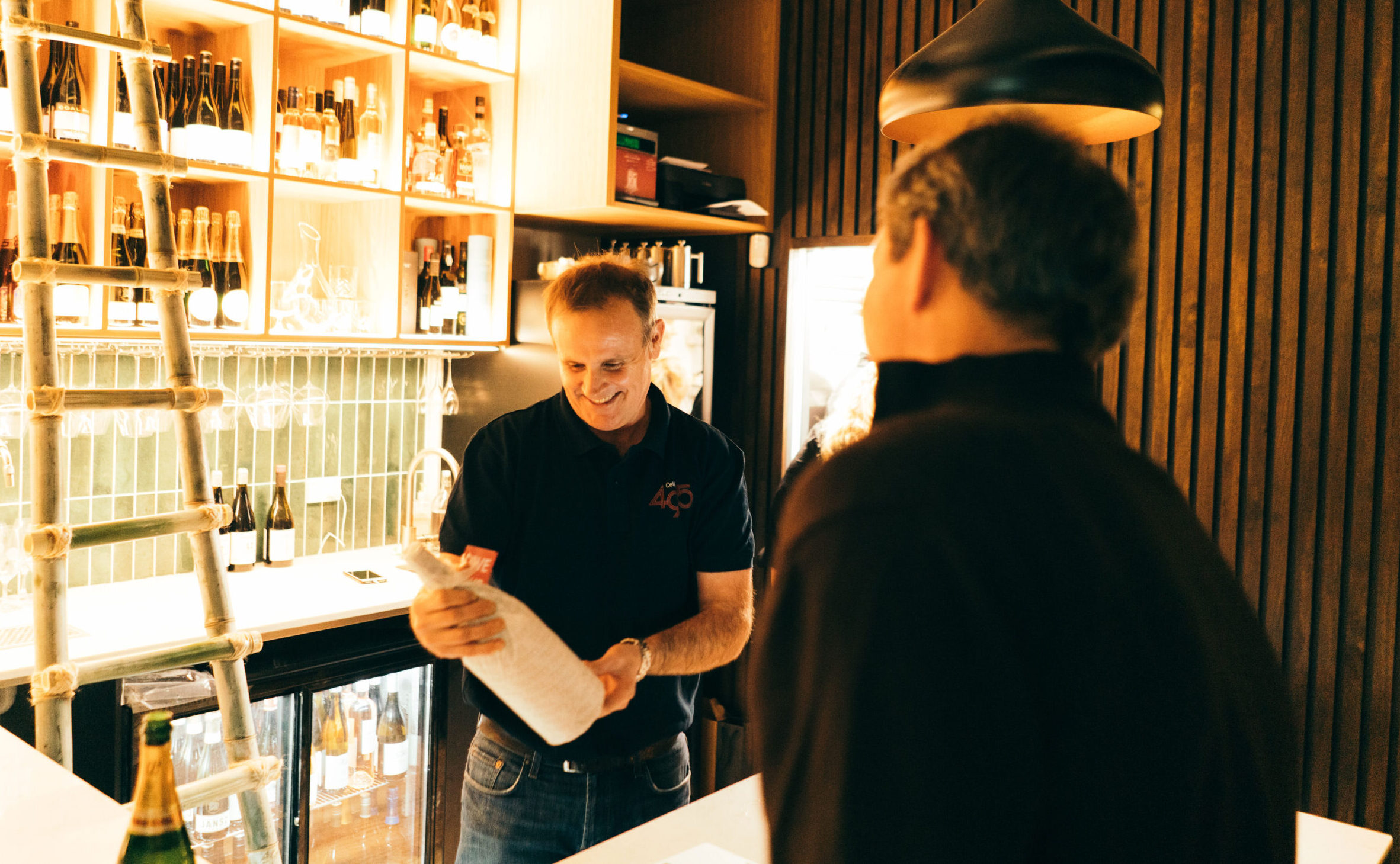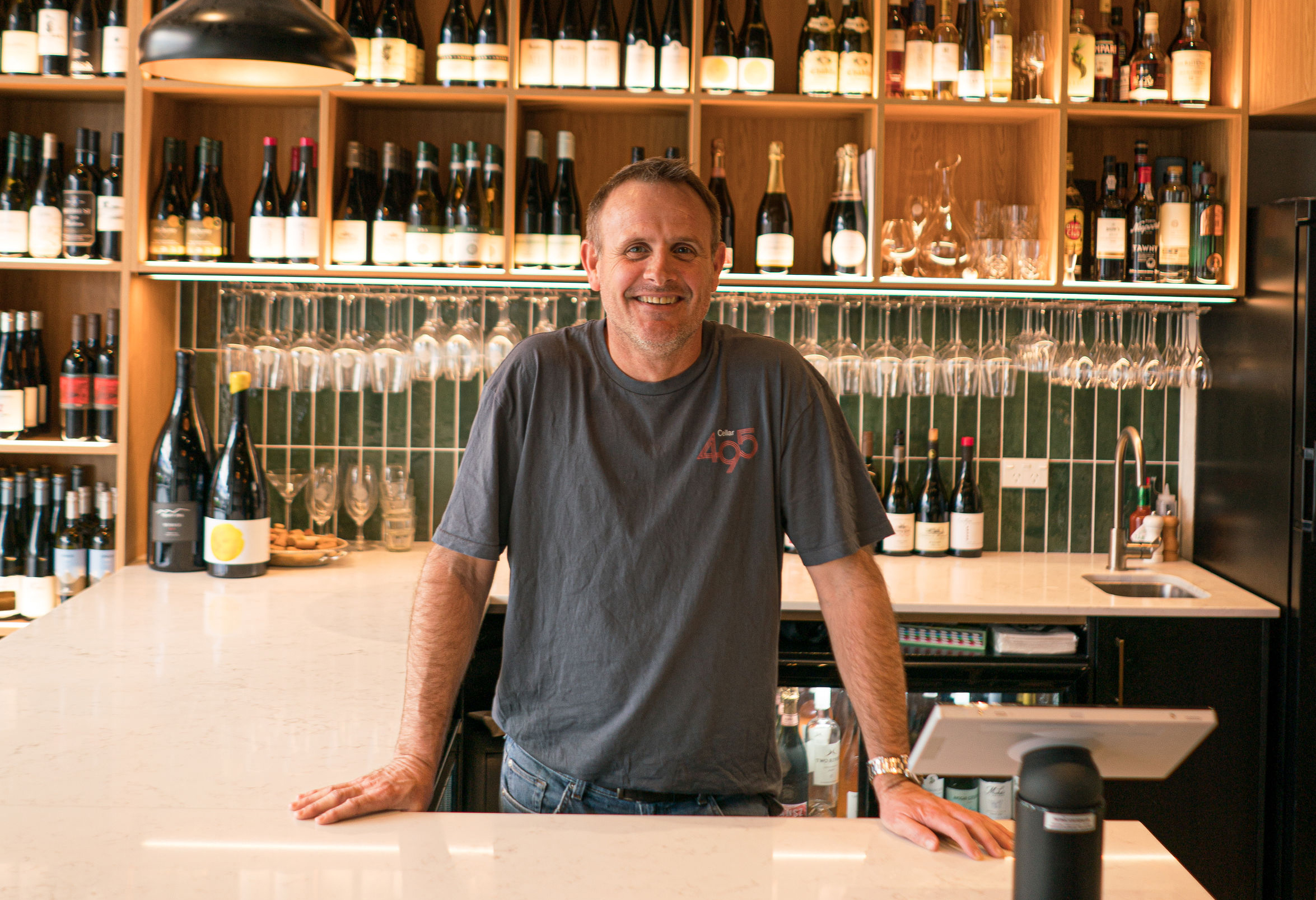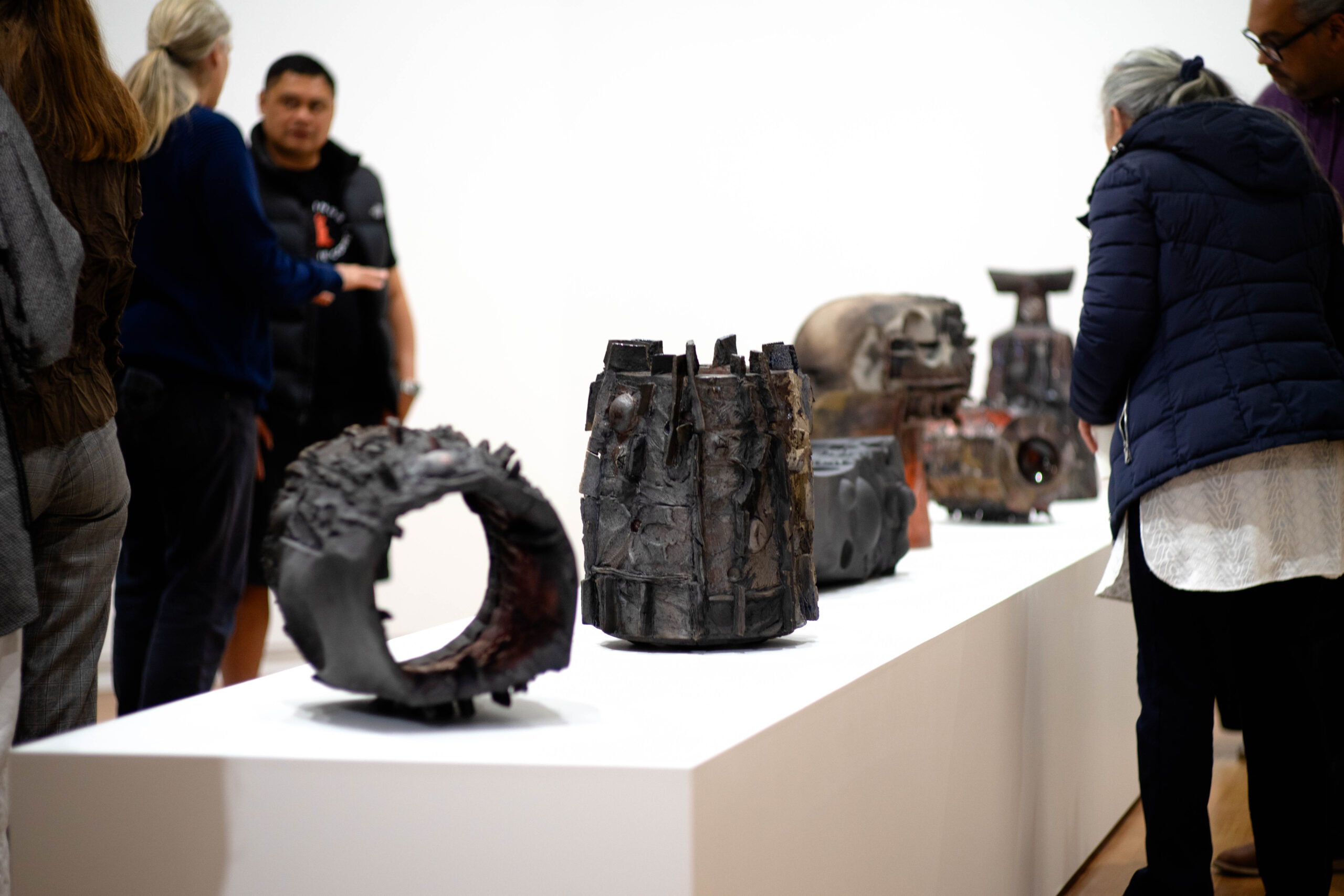
AROUND NGĀ MOTU

Appetite for investment
With new investments bringing significant employment and opportunity, and its wine success now matched by an exciting, eclectic dining scene, Hastings doesn’t seem to have noticed there is a recession on.
” There can be a lot of scepticism about foreign investment, but look what happened: We live here, my daughter was born here, and we are half-a-generation from being kiwi owned. How good is that for investment?
I’m sitting with Australian born and raised, David Peabody Jr in the restaurant at Craggy Range Winery, discussing how his family created one of Hawke’s Bay’s largest and most widely praised wineries.
In 1998 and 1999, Terry and Mary Peabody purchased over 300 hectares of land, planting vines to realise their vision of “a wine estate that would sit comfortably with the world’s greatest wine estates,” an investment of many millions they described as “anchored by the establishment of a 1000-year trust, a commitment to their long-term thinking.”
In the early 2000’s, Robert Parker, the most powerful US wine voice of the time, gave a Craggy Range red an unprecedented 97/100. The accolades have flown since and in 2022, Craggy Range became the first New Zealand winery selected for the prestigious, 800 year-old wine market La Place de Bordeaux.
The very definition, you’d think, of desirable international investment, but it wasn’t universally lauded. Criticism coming from concerned locals and some envious of precious land being bought up and businesses built to funnel funds off-shore.
I remember attending the opening of Giants Winery, one of Craggy Range’s two wineries, more than twenty years ago. I heard the criticisms then and have seen the accolades since. “We took some spice for it.” David says, “and I couldn’t tell you how much Granddad put in to keep it going after buying, but I do know, it won’t pay him back in his lifetime.”
When David first told his grandfather he wanted to work in Craggy Range, his grandfather replied “Prove it.” So David went to work in a wine store, underage. Since then he’s had a hand in every part of the industry, from growing through production and sales.
Craggy Range’s business manifesto says “Our commitment to organic farming is two-fold: preserving our land and resources for generations to come and enhancing vineyard ecology by eliminating unnatural inputs.” David is currently preparing the vineyards for this transition, but there’s a more personal drive. “My Grandmother says organics make you become a better farmer.”
Investment might be at scale but, for Craggy Range, excellence is in the details. Take the kitchen garden, managed by a full-time gardener, which supplies the winery restaurant and delights Executive Chef, Casey McDonald.
McDonald walks me to the green-housing, the seedling nursery and through long rows of herbs, leafy greens and vegetables that are literally behind his busy restaurant. “The aim is consistent supply of produce we can absolutely believe in,” he says.
For a chef who has worked fine dining internationally, the garden has developed his skillset unexpectedly. “The garden has changed how I operate. I’ve moved kitchen hands out here to work. Sure, we chefs may be prepping our own dishes, but the quality of what we put on those dishes makes up for it. Just look at those swedes!”
McDonald, picking greens and veges for a dinner at MoVida in Auckland, showcasing Craggy Range in Savor Group’s Food Fest 2024, reaches down, plucks a leaf and chewing happily offers one my way. “Taste this.” I can’t refuse. “That’s coming North.”
Smaller restaurant owners are impressed. Bert Van De Steeg is chef and owner of Malo restaurant, beside the newly opened and surprisingly plush Porters Boutique Hotel in Havelock North. He says that what McDonald is doing helped him decide to buy Malo. “Wine tourism brings people here and the locals keep me busy out of season.”
Moving from Queenstown with a Michelin-starred CV, Bert could have invested anywhere, and says “We are here for family.” His son has learning needs, and the local school has a specialised unit that welcomed his boy into secondary school a year early. “In the end, the community decides your business choices,” Van De Steeg concludes fondly.
When the last bubbles of the annual Blossom festival parade bubble cannon fell, and the face painters packed away, Dan Pistole and Jessie Bradshaw, co-owners of energetic, vibey Sazio Restaurant, had me join them at the impossibly stylish Hastings Distillers, NZ’s only certified organic, spirit and liqueur maker. If you are a gin drinker or negroni devotee, Hastings Distillers is your Shangri-La.
We’re in the heart of Hastings hospitality, a heart that loves to share. Craft & Social is the biggest player, and I stop in for an asian-inspired fresh fish crudo and a lightly golden Munich Lager by Brave Brewing. Craft & Social owner, Damon McGinness, tells me Brave Brewing’s premises is just a few hundred metres away and I must visit.
He is keen to know where else I intend to eat and drink in Hastings. I mention planning a wine at Cellar 495, the wine-bar/bistro owned by Master of Wine, Michael Henley. If Henley does a wine list, I want to drink it.

McGinness is not satisfied. “You can’t just go there for a drink,” he insists, despite his own fully-staffed kitchen and ample dining spaces. “You have to eat there.”
He is right. Dining at Cellar 495 matches its exceptional wine list. Exquisite food, focussed flavours, served with charm and if you’re up for it, irreverent chat. Dining at the bar in a full and friendly dining room, I planned to return the next day.
But continuing the spirit of Hastings hospo, Henley told me for my next dinner to go down the street to Fun Buns, an anime-inspired Hong Kong style street canteen, serving Bao and cocktails — irreverent freshness in a building only slightly younger than the beautiful Art Nouveau building that houses Cellar 495.
Buildings are at the heart of Hasting’s resurgence. Local gems in the city’s CBD include Quest Hotel Hastings, completed last year by Wallace Development, and the opulent Hawke’s Bay Opera House.
Michael Whittaker is one investor particularly credited with the resurgent CBD, encouraging restaurateurs to downtown Hastings. Online meat seller Matangi Angus Beef has also opened in the space, with an imaginative fit-out that makes butchery spectator-friendly.
Whittaker is a local boy who built a career offshore and returned to find his hometown down-at-heel. “Hastings suffered the fate of so many provincial centres. Retail floundered and the heart of town struggled. We can blame big-box development and the emergence of online retail, but for me it’s about belief. You have to ask, ‘Why can’t we create a great city centre?’
Whittaker has immense almost zealous enthusiasm for Hastings CBD. “The buildings here are beautiful. If you develop them with authenticity, they will deliver longevity and a liveable space that people believe in.”
Authentic development means taking historic or characterful buildings, which Hastings has aplenty, “exposing the original construction, brick and wooden beams, and engineering around their character.”
I mention obstacles: earthquakes, council regulation and recession. “No! Not at all.” He’s almost dismissive. “Earthquake strengthening obligations are an opportunity to strip the building back and show its bones. These (buildings) were built to last. Give them attention and they give you longevity.
“Council provision infrastructure and, most importantly for business, help give certainty. We’ve gone from a divided council of eight or nine years ago to unity of vision, purpose and policy. Our Mayor and CE can take some credit for bringing commerce and community together.”
For a Kiwi property developer speaking about the council, it’s a rave review. His sentiments are echoed when I meet Hastings Heretaunga District Council CEO To’osavili Nigel Bickle, who tells me “We at the Council stay in our lane: provide the services, connect the planning to the vision, and ease the pathway that progresses the community.”
Barrel-chested Bickle is an energetic advocate for community, narrating a tour of rapidly expanding industrial developments where Mainfreight have committed to a multi-million dollar logistics base, joining Rockit Apples, Foodstuffs and an array of medium to heavy industry lining a road that wasn’t even here five years ago. Ask him to explain how Hastings is getting so much investment over the line and he says, “We have one goal, liveability. Healthy people need a healthy economy and our goal is healthy people.
Hastings’ Mayor Sandra Eastlake herself tells me this is the reason her region is seeing success. “A place is people, so decisions on infrastructure are to support the needs of people. Natural and environmental health, consenting and regulations are all about people. So if we hold people and their wellbeing as our focus, we have clear measures for performance.”
In an era of divided and dysfunctional local government, the unity achieved in HHDC’s council chamber is enviable but, she says, easily explained “We don’t agree on everything obviously, but we have been able to unite around outcomes on liveability. When we drive to that and only that, we find our way to effective governance.”
This is being achieved in a region with significant challenges. Devastating recent weather events grabbed national attention, but further back they faced the 2016 water crisis, when thousands were poisoned and four people died. Council funded a $100 million water treatment project culminating in the community landmark and education centre Waiaroha, an innovative response to a public health crisis. Since opening in October last year, some 3,500 school students and countless community and ratepayer groups have visited, circling the ten-metre high, thirty five metre diameter tanks, looking into the working treatment plant and playing the infotainment games on screens in the education centre.
Back to Michael Whittaker, who is guiding me through his newly-developed laneway that takes pedestrians in from the main street beneath exposed, original beams, past slick contemporary work-spaces and the alluring aromas of Bambina Pizzeria. We walk through through a hefty, copper-edged door, alongside the newly opened Hawkes Bay office of Datacom — another high-profile new business arrival celebrated by Hastings believers — then open out towards Civic Square, the CBD’s largest open space.
Here, a circle of pou — nineteen carved figures — stand facing outwards, they represent tūpuna of one of the eighteen marae of Heretaunga, each gazing out and towards their own marae. The nineteenth figure, Te Pou o Takitumu ki Rarotonga to Heretaunga, looks to a more distant home, gifted from Rarotonga, taking its place here in 2019.
This art piece stands fittingly beside the entry to Te Whare Toi o Heretaunga — Hastings Art Gallery. Director Sophie Davis grew up in Te Waipounamu with a background in contemporary NZ art spaces including Enjoy Contemporary Art Space, Dunedin Public Art Gallery and The Physics Room.
Davis leads the gallery with a distinctively local and community focus. “We are not a collecting gallery,” Davis says. “We are all about developing new exhibitions and programmes. Commission new work, not to collect, but to share.”
“We exhibit travelling exhibitions and work with leading Aotearoa artists based elsewhere, but vital work for us is bringing perspectives of our community into focus. Sharing the experience, insight that artists have, of here, of the world viewed from here. This is part of our work as a gallery.”
The gallery’s exhibition programme supports artists with space to deliver what are often their first solo shows in a public gallery. “It is surprising how often an artist can work, for years, decades, establish themselves. Opportunities like solo exhibitions and commissions provide important achievement and recognition for artists.” Davis explains.
The current shows are a case in point. Tracy Keith, a recognisable arts name, lives and works in Heretaunga Hastings yet Remember Industry is his first solo for a public gallery.

The breadth of this work is evident in the current shows. The central space currently hosts Ceremony in the Air, an entrancing network of paintings by Pip Davies, a local who lives in coastal Haumoana, just twelve kilometres from the gallery.
In the honeycombed heart of the gallery, a gift of the building’s distinctive architecture, is Te Matau-a-Māui Contemporary Art, an absorbing combination of new artwork commissioned through a partnership with the Gwen Malden Charitable Trust.
“We are proud of this exhibition,” says Davis. “We have supported four outstanding local artists to walk through the fire of bringing new artwork into the world… It takes work, faith, trust, skill and creativity. And now our community gets to experience it.”
Returning is a central theme to this show, and the vision of Hastings artist Nephi Tupaea, of Pacific Sisters fame, features eye-catching paintings and family photographs. It is for family reasons she returned home to Te Matau-a-Māui. Here, she created these vibrant, layered and thought-provoking works.
Tupaea’s project within Te Matau-a-Māui Contemporary Art expresses the vision for this community of everyone in Hastings I talked to, and summed up by Mayor Sandra Hazlehurst:
” We want to create a place our people want to return to. Travel, go, experience the world. But when you think of home, we will have a place to welcome you, a place to prosper, a thriving community to be proud of, a home that calls you, holds you and helps you be all you want to be.
It is certainly a place I want to return to. Taste Hastings is coming up in November, or there’s the music and wine of Bridge Pa Fest in January. I think doing both might be an acceptable investment.
Whether you want a cleansing ale, an outstanding aperitif, a classic cocktail or a fine wine; red, white or sparkling, there’s a taste of local excellence to try.
1. L’Opera and Barrel Aged Negroni 2023; ltd Edition
Two winemakers, harvesting their biodynamic garden methods in NZ’s only organic distillery, are making the finest vermouth I have ever tasted. Mind-blowing.
Negroni 500ml $95
L’Opera Bitter Orange Aperitif $55
2. De La Terre Methode Traditionalle Blanc; de Blancs 2018
The extremely well-travelled boss of the 5 star Park Hyatt Auckland is a huge fan of De La Terre. He lists and collects their wines and says “It’s a must visit, worth the drive to the hills.” Small, imaginative, eccentric. Don’t expect luxury, do anticipate a distinctively ‘Bay’ memory and some very fine wines. Including this textural vintage sparkling.
$49
3. Red Metal 2023
Sur Lie Albarino
No cellar door or marketing spend. Just excellent wine for decades. Rightly, if quietly celebrated for excellent reds, this summery white is ideal for January’s Bridge Pa Wine Fest. Sue Edmonds says, “200 people dancing on our lawn, what’s not to love?”
$32
4. Bilancia Hawkes Bay Syrah 2022
It doesn’t matter the vintage. Bilancia make exceptional Syrah. Their top drawer La Collina is a must drink in your life time wine and this, its affordable little sibling, shows-off everything terrific about Hawkes Bay red.
$32
5. Craggy Range Gimblett Gravels Vineyard, Hawke’s Bay Chardonnay 2022
Hawkes Bay Syrah made their name and personally, I find their merlot blends extraordinary. It’s spring, so drink this deftly flavoursome Chardonnay. Holds the promise and fruit of a long summer.
$45
6. Brave Brewing Bottle Rocket Extra Pale Ale
Not everyone dreams of being an All Black, but if you win Champion Home Brewer of NZ, then you dream of being Brave. Of course you need to try it fresh, on tap but until then, give yourself a Rocket.
24btl case $90







